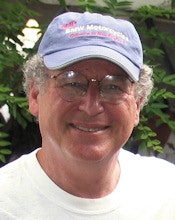
The ADA continues to seek a silver bullet with which to kill off the concept of dental therapists in America.
Rather than requesting a comprehensive study that looked at economics, team designs, job satisfaction, and societal benefits, ECG Management Consultants -- which wrote the ADA's economic analysis of midlevel providers (MLPs), released July 25 -- was apparently provided specific parameters with which to validate preconceptions and misconceptions regarding dental therapists (DTs) that have echoed from deep within its leadership and membership for almost a century.
 Allen Hindin, DDS, MPH.
Allen Hindin, DDS, MPH.Although the ADA claims that the ECG Management report "did not model private practice settings," the assumptions that were used apparently do not adequately reflect costs, therapist roles, and measurement of success in public health settings. For example, the reimbursement rates that federally qualified health centers (FQHCs) receive for serving low-income patients are generally better than those provided through state Medicaid programs to private dental practices and other settings.
The report also assumes that therapists will be employed full time in a single site; however, few therapists practice full time in the same location. They generally work part time in multiple settings, including schools and mobile clinics. The use of a traditional private practice measurement of the aggregate of procedures performed as the means to assess economic viability is not directly transferable to a public health facility, which serves a generally distinct and separate population from that which is served by most private practices. One might ask why there was not a clearer appreciation as to what constituted "success" in a public health dental program and roles that dental therapists might play within them?
What dental therapists really do
The report offers a snapshot that doesn't begin to capture the breadth of what dental therapists do. Economic viability of therapists in public health settings is not simply a matter of clinical services produced, multiplied by fees per service, and subtraction of expenses. In Alaska, dental health aide therapists (DHATs) commonly visit homes in order to assess lifestyle impacts, educate Native families regarding oral hygiene, and participate in community health projects such as fluoridation efforts, in addition to their clinical roles. "Production" includes efforts to improve oral health of the population as well as provide care for individual patients. In that regard, reduced incidence of disease through improved attitudes and behaviors is a critical measure and the overall goal of therapists in dentist-led teams.
A clear benefit from deploying dental therapists in Alaska is early clinical intervention, which can prevent later high-cost travel by air for more complex treatment. Then there is the question of how communities within and beyond Alaskan villages benefit by avoiding or reducing use of emergency rooms (ERs) for common dental emergencies. Research by the Pew Center on the States revealed there were more than 830,000 visits to hospital ERs in 2009 for preventable dental problems. Getting care to the underserved can reduce those ER visits and save taxpayers millions of dollars. What is avoidance of lost days from school or work worth? How do these aspects of early intervention/treatment fit into "economic viability"?
The Community Dental Health Coordinator (CDHC) model has been actively promoted by the ADA, with millions invested over the past six years. If CDHCs also provide clinical treatment, even limited to interim therapeutic restorations (ITRs), why was that provider not included in the study? How many years of data must be somewhere by now?
When ECG was tasked with studying the economic viability of dental MLPs, why were the DHATs, DTs, and advanced dental hygiene practitioners (ADHPs) compared only to each other, rather than to dentists performing the same services? The salary assumptions for therapists also appeared somewhat skewed, due to what appears to be a significant underestimation of total dentist compensation. The $119,500 salary assigned to a dentist in Connecticut made no reference to available loan forgiveness -- up to $60,000 for two years of employment (see Table 8, p. 14 of the ECG report). Four weeks of vacation and other benefits also are typical, costing far more than nondentist employees. If the actual total cost of dentists, corrected for nontaxable components, were compared to therapists, how would that have affected the report's conclusions?
What is most telling is that even with skewed assumptions, the ADA/ECG report confirms that the Alaska model of DHATs -- which is the international model -- can be a financially viable way to reach more low-income Americans. It makes one wonder how the overall findings would have changed if ECG had been provided with more comprehensive parameters for its study. Certainly not known for being wastrels, the Dutch have recently added dental therapists to their effort to improve access to oral healthcare. What do they know that the ADA/ECG study has missed?
The percentage of underserved Americans has been generally unchanged (30%) since the 1930s, with the problem too often stereotyped as people "who don't care enough about their teeth." Poverty, limited education, cultural differences, adversely impacted upon by sophisticated marketing/advertising of highly cariogenic food, tobacco, alcohol, etc., create a daunting public health problem. Then there are the issues of distance, disability, poor self-care behaviors and attitudes, etc.
The "It's distribution, not a shortage of dentists" response changes nothing. Pointing to the various charitable organizations and the multitude of dentists who understandably give millions of dollars worth of free care willingly has minimal impact on the needs of the 80 million to 100 million Americans generally accepted as dentally underserved. Expecting governments to raise reimbursement -- unquestionably a critical factor impacting access -- without our own concomitant efforts to reduce costs and improve outcomes associated with providing basic care for the poor and near poor is not likely to succeed.
Prevention not the only answer
While we cannot drill and fill our way to a solution to these problems, there is also no doubt that prevention, in the absence of treatment of active oral disease, is an equally questionable approach. It must be a combination. Is the traditional private model designed to take on the population that public health is committed to serving? Might not public/private collaboratives incorporating the best of both be worth considering? How might therapists fit into a system geared for serving the basic dental needs of poor and near poor that otherwise must employ only dentists, costing several hundreds of thousands to produce -- talk about "economic viability"!
Given the growing scientific basis for oral/systemic disease connections, if we fail to help create rational, innovative approaches to improve access and seek measurably improved outcomes, American dentistry will be seen by an ever-growing number of legislators, regulators, and the public as a significant part of the problem.
As a 41-year member of the ADA, I believe the association can do better. First, it needs to overcome an almost 90-year-old institutionalized ignorance of where, how, and why dentist-led teams incorporating therapists function effectively around the world. Certainly ADA literature was generally mum about the subject between 1921 and 2002. Had it not been for the Alaska DHAT, I question whether there would be significant awareness among membership regarding therapists today.
The ADA needs to raise the tone and quality of the discussion, which has for too long been derisive and shrill, too often based on bias rather than evidence. This will only happen when leadership rises to the challenge. Judging from increasing attention being focused upon therapists, by public media, health-related foundations, public health dentists, and governments, it is time for the ADA to reconsider its longstanding opposition to therapists, particularly in pilot/demonstration projects.
Surely, after almost seven uneventful years of DHATs in Alaska and, more recently, DTs in Minnesota, the "risk to the public" argument cannot stand the test of truthfulness. Shifting the argument to economic viability appears to be a tactical move, a continuation of efforts to reduce the level of interest in or impede investigation of dental therapist potentials relating to access. Absent studies of various functioning, therapist-based public health models in America, continuing to "just say no" will be equally unsuccessful.
Allen Hindin, DDS, MPH, earned his Doctor of Dental Surgery degree from the New York University College of Dentistry in 1971 and his Master of Public Health degree from New York Medical College in 2003. He has been in private practice in Danbury, CT, since 1996 and has been involved in public health dentistry since 1975. He currently serves as the dental director of United Cerebral Palsy of Hudson County in Brewster, NY.
The comments and observations expressed herein do not necessarily reflect the opinions of DrBicuspid.com, nor should they be construed as an endorsement or admonishment of any particular idea, vendor, or organization.



















